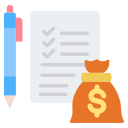Getting Started Today: Small Steps, Big Protection
Open a dedicated high-yield savings account, nickname it “Emergency Fund,” and automate a weekly transfer. Even ten dollars builds a habit. Automation beats motivation, and seeing the balance grow makes sticking with it surprisingly satisfying.
Getting Started Today: Small Steps, Big Protection
Audit recurring expenses: unused subscriptions, premium plans you rarely use, and overlapping services. Redirect those freed dollars to your emergency fund. The trick is substitution, not sacrifice—preserve joy while trimming waste that you won’t miss.





